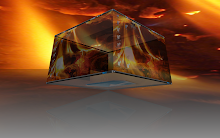There are several reasons you should install Ubuntu on a USB flash drive. First of all, a USB memory stick is easier to bring around than a Live CD if you need to install Ubuntu on a computer. But more importantly, by installing the persistent version, not only can you use your USB as a Live CD, but in addition, you can save any changes to the system to disk! In effect, this means that you have your own portable system that you can bring anywhere. Forget the worry of bringing your valuable laptop on vacation. Instead, once you have booted your system onto somebody else's computer, you can install software, perform system upgrades, and do your work on your own customized system with your own software installed. Everything you do is saved onto your USB stick. And if you do need to access or save something on the underlying system, the computer hard drives will be automounted at startup.
Naturally, your system will be limited by the disk size of your USB. Most installations use about 700 MB (the size of a Live CD) for the Live portion of the system, leaving the rest of the disk as free space. With a dirt-cheap 4 or 8 GB USB stick, you have plenty of space to install software and files.
Running a system from a USB can also be convenient if you need dedicated servers to perform exactly what you want. Rather than going through a procedure of installing necessary software and making sure that everything works on the existing system, which likely is a Windows computer loaded with crap, you simply plug in your pre-prepared USB stick and boot from it. It is cheap and quick to buy 10 USB sticks, prepare the system and software on one of them, and then replicate the entire system onto the 9 others.
Another great usage is for removal of viruses on a Windows system. Viruses are often hard to get rid of, as they might get loaded during boot-up and refuse to be deleted by the Windows antivirus application. Booting Ubuntu from the USB and running a virus scanner such as Avast or Clam (Clam is also available from repositories) should enable you to remove the viruses. See my guide for further instructions.
So how do you make such a USB stick? I just followed this guide, which was a piece of cake. If you want the USB stick to also work as a normal flash drive when connected to a computer, you might want to add a third partition in addition to the two needed for the Ubuntu Persistent system. Format it as NTFS so it is readable on both Windows and Linux systems. You might need to have this partition as the first partition for Windows to discover it. I have not tried this myself, but believe it should work.
Thursday, June 26, 2008
Why you should install Ubuntu 8.04 (Hardy Heron) Persistent on a USB stick
Subscribe to:
Post Comments (Atom)

No comments:
Post a Comment